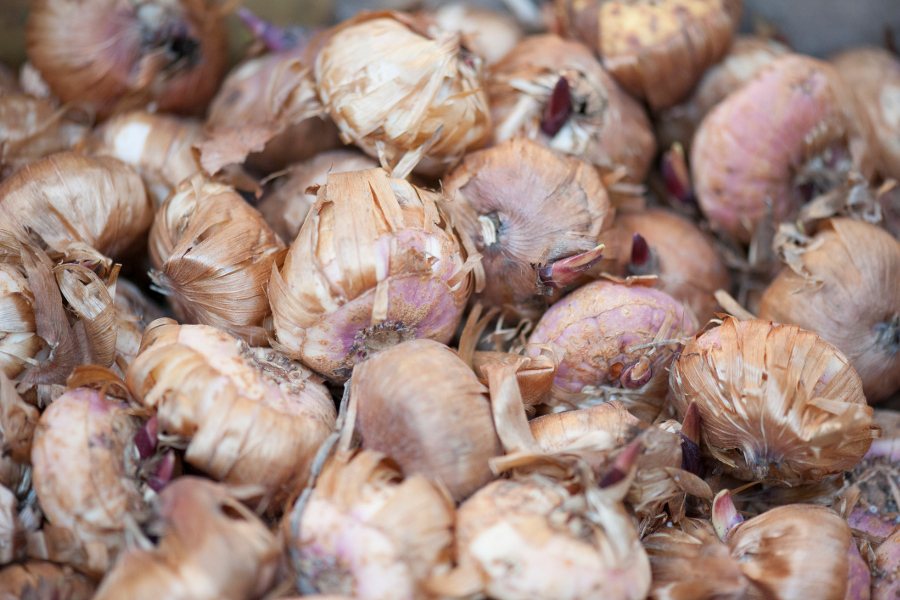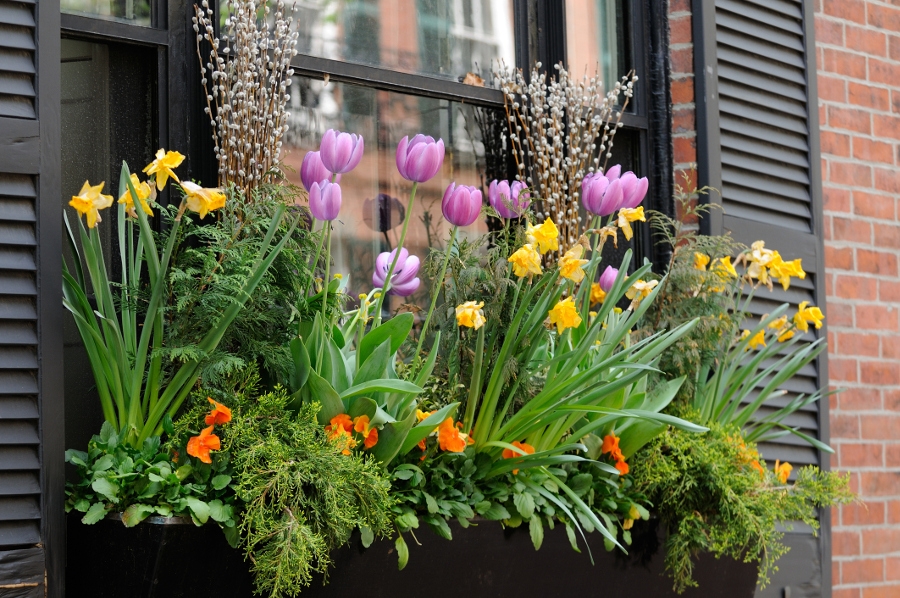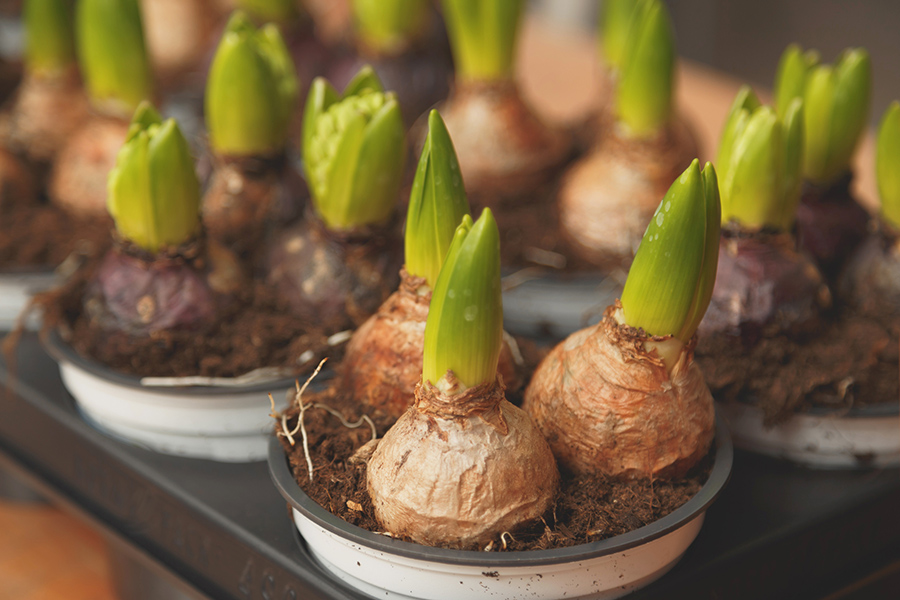Bulbs don’t seem to get enough credit. They’re easy to plant, easy to care for, and their colorful blooms can be enjoyed year after year. So why don’t more of us take advantage of them? If you’re looking to spruce up an entryway, patio, or sunroom, look no further than with a bulb container garden. And if you’ve never planted bulbs (or anything else for that matter), don’t worry — we’ve covered everything from buying to planting.
What is a bulb?
Nope, it’s not the thing you stick into a light socket. In botany, a bulb is a circular stem with fleshy leaves for a base. The bulb of a plant stores food and its organs during winter dormancy, which is what allows the flower to bloom every year.

What is a container garden?
A container garden is just that: a small garden or collection of plants in a large container. But before you start picturing plants growing out of your Tupperware, we’re here to tell you container gardens are just as exquisite and colorful as traditional ones. And unlike regular gardens, container gardens are perfect for people who don’t have time to take care of a full landscape or are new to groundskeeping altogether. Best of all, they’re amazingly versatile and a great way to introduce some greenery into a small apartment or home without much yard space.
Selecting bulbs
The quality and longevity of your flowers depend on the types of bulbs you get. You want to find bulbs that are plump and firm. Soft, squishy bulbs or ones that have mold on them have started to decay and won’t produce beautiful flowers (or really anything for that matter). You also want to pick the largest of the bunch because those are the ones that will sprout the most flowers. We here at 1-800-Flowers.com know just how exciting it is to care for your flowers and watch them grow — that’s why many of our bulbs ship right to your door, rooted and sprouted!
Caring for your bulbs
You never want your bulbs to spend much time above ground, so the minute they arrive, plant them in soil. The best time to plant them is when the ground is cool and evening temperatures range between 40 and 50° F (aka, now)!
Where to plant bulbs
Whether you decide to stick with a traditional ceramic pot or get a little more creative and use an old toolbox or wooden barrel, the actual container isn’t as important as its location. Containers should be placed somewhere that receives direct sunlight for anywhere from six and eight hours a day.

4 tips for planting bulbs
These best practices will help you get the most out of your bulbs and ensure they keep coming back year after year.
1. Place them deep enough
Finding the right depth to plant your bulbs can be tricky. A good rule of thumb is to dig a hole about two or three times deeper than the height of the bulb. So, if the bulb is 3 inches tall, dig a hole about 6–9 inches deep.
2. Use the right soil
Because bulbs are planted deep in the ground, they tend to do best in well-drained soil (soil that lets water travel through it quickly and evenly).
3. Place them right-side up
If you get bulbs that have a tip or pointed end on one side, plant them so that that end is the one popping out of the ground. If your bulb is more circular, the end with roots growing is the side you place in the ground.
4. Water them well
Despite their different appearance, bulbs act just like seeds — which means they need plenty of water to lay down roots and grow. Ideally, you should water your bulbs every other day.
If you still want the benefit of having a garden without actually going through the process of planting it yourself, you’re in luck! We offer beautiful tulip, iris, and sweet springtime bulb container gardens.


